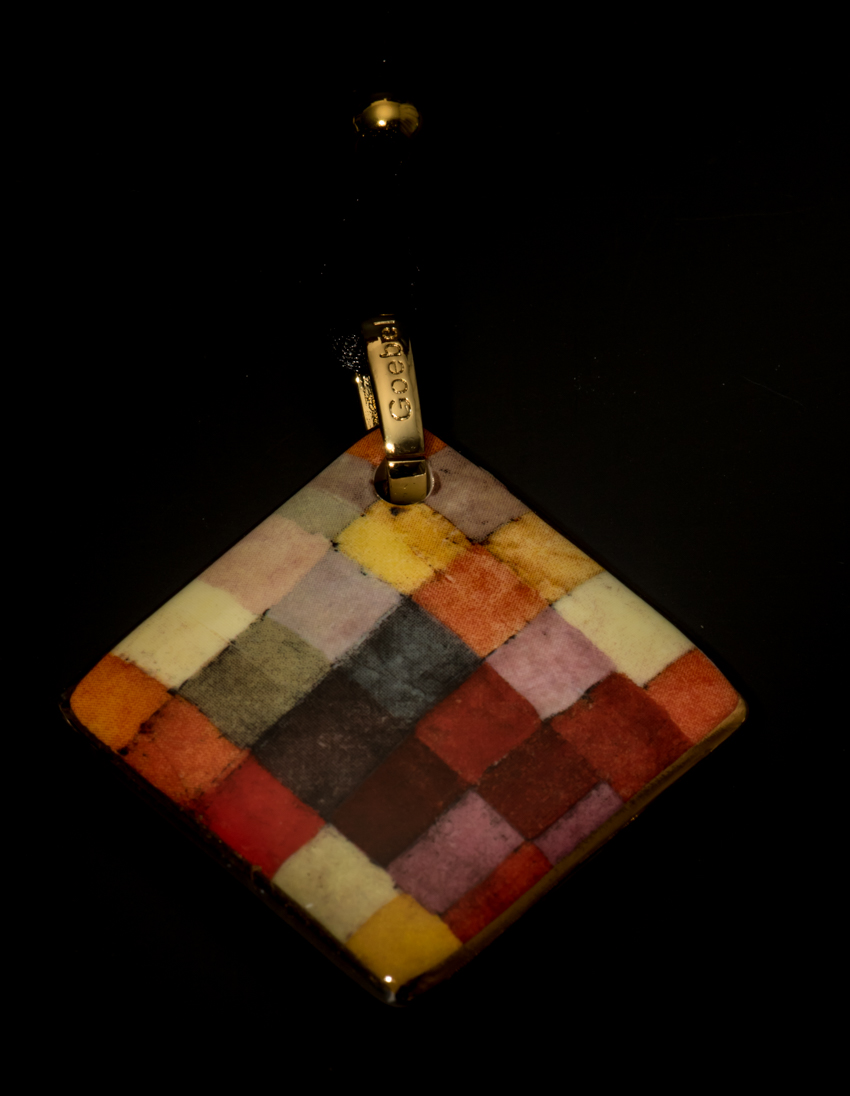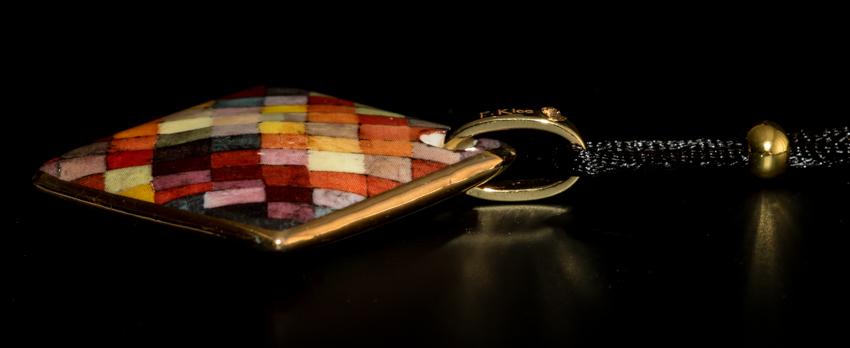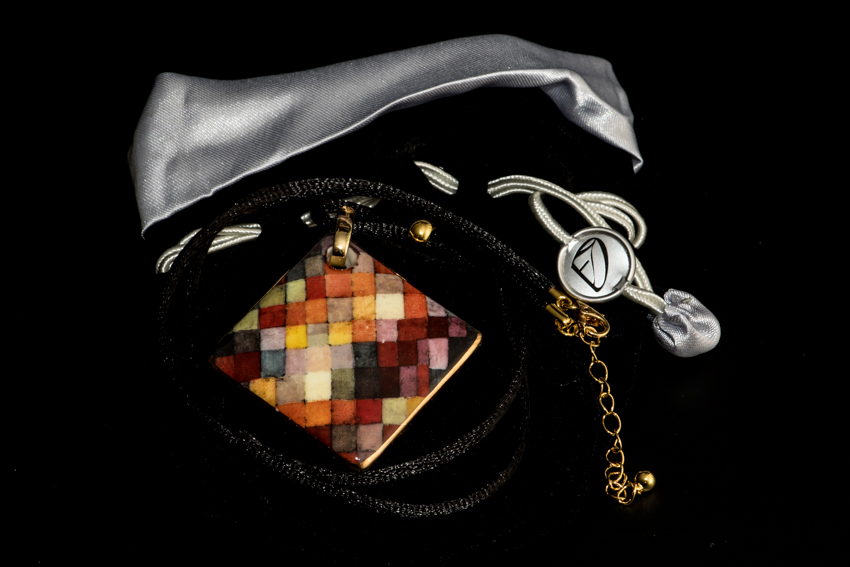Tel : (+33) 4 94 63 18 08
9am - 6pm from Monday to Sunday
All products Paul Klee • Products of the topic Pendants-Necklaces
Paul Klee Pendant - Harmony (diamond shaped)
REF : BI-KLEE-01
In stock
Only 1 in stock
Unavailable
59,00 €
Porcelain pendant, diamond shaped.
Dim : 5.5 x 5.5 x 1 cm
Weight : 30 gr
Textile cord with fastening : 58 cm
Jewellery of hard porcelain, decorated with high quality ceramic art prints,
real gold platings and Swarovski crystals.
The metal components are antiallergic and nickel-free gold coated
The jewel is presented in its beautiful black and gold colored box
Discover the artist's categories
Paul Klee
Additional cultural and artistic information about the artist
* * *
Main works
Senecio, Two dromedaries and a donkey, Park near Lu, Blue night, The Niesen, Small pine frame
Artistic movements
First constructivist, it gradually moves towards a soft abstraction where landscapes are expressed in harmonious geometric forms.
Inspiration, influence
His inspirations are numerous. Passionate about drawing from a young age, he is influenced by both artists from the Italian Renaissance and by the Impressionists he meets in Paris in 1905... But also by the works of Corot, Ensor, as well as Goya and Velasquez. The synthesis he will make in his painting is also diverse!
His contemporaries
When Gropius calls him to Weimar to teach, he finds an entire generation of abstract painters and theorists at the Bauhaus.
To keep in mind
Beyond shapes and colors, Paul Klee's work exudes a humanity, a spirituality that makes him unique, both in his time and in the Western world.
To go further
Paul Klee, sometimes considered the first surrealist, more for his approach than his painting, paved the way for the next generation. Delaunay, inspired by Klee's writings, continued the German painter's research.
Biography of Paul Klee
Paul Klee
Paul Klee was born on December 18, 1879, in Switzerland. After several years perfecting his painting skills, he discovered the works of Van Gogh and then those of Cézanne, the "master par excellence".
In 1911, he met the artists of the "Blaue Reiter".
The following three years marked a crucial turning point in Klee's work and his approach to painting, but he was mobilized from 1916 to 1918.
His reputation grew after the war. Having become a professor at the Bauhaus, alongside his friend Kandinsky, he participated in the first surrealist exhibition in Paris in 1925. He left the Bauhaus in 1931 for the Düsseldorf Academy. Two years later, he was dismissed under pressure from the Nazis.
Devastated, Paul Klee took refuge in his hometown, Berne. However, his health deteriorated rapidly. In 1937, Braque and Picasso traveled to Berne to visit him. Klee's works belonging to German public collections were confiscated; seventeen of them were featured in the "degenerate art" exhibition in Munich.
On June 29, 1940, Paul Klee died from paralysis of the heart muscle.
(c) Natacha PELLETIER for PASSION ESTAMPES
























